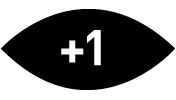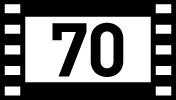

Few movies generate as much anticipation and scrutiny as Star Wars: The Force Awakens, J.J. Abrams's relaunch of George Lucas's fabled space saga. The film, the seventh in the series and the first without Lucas as its principle creative force, has been under a microscope since before production was even confirmed, and the pressure not to screw up the first entry in what will be a new multi-platform, multi-billion-dollar franchise must have been enormous. Of course, one could argue, Lucas's three prequels to his original groundbreaking, industry-disrupting trilogy were so atrocious that any new film couldn't help being an improvement. Still, by attempting to restart the Star Wars series in a way that would satisfy audiences and critics of all generations and levels of fandom, Abrams and producer Kathleen Kennedy undertook an immense and improbable task, and amazingly, they succeeded. The Force Awakens is just about as good as anyone could realistically expect.
In 2012 Lucas named longtime friend and associate Kennedy as the new president of Lucasfilm Ltd. and then sold the entire company, including the Star Wars rights, to Disney. As that deal was being inked, Oscar-winning screenwriter Michael Arndt (Little Miss Sunshine, Toy Story 3) submitted an uncommissioned spec script for Episode VII that Lucas and Kennedy both liked. It seemed a new Star Wars would happen sooner rather than anyone expected. Several high-profile directors enthusiastically put their names forth, but Abrams, fresh off the success of his Star Trek reboot, was the first choice of Lucas, Kennedy, Disney, and much of the fan community. (Even I felt a glimmer of hope when his name was announced. Though I didn’t much care for his Star Trek reboot or his homage to Steven Spielberg films of the 1980s Super 8, I appreciate Abrams as a savvy writer/director who understands how to satisfy audiences—especially when he's only starting a story and leaving it for someone else to resolve ). Accepting the job meant being unavailable to direct the third installment of his Trek trilogy, but Abrams couldn't pass up the opportunity to revive Star Wars and join its enduring, growing legacy.
Before the Disney deal was finalized, Lucas approached Carrie Fisher, Mark Hamill, and Harrison Ford, the three stars of the original trilogy, about possibly reprising their roles in the new movie. Surprisingly, they were all open to the idea. Ford's willingness to participate was especially unexpected. Not only is he the biggest star, with an impressive career of roles he’d much rather be remembered for than Han Solo, he has always maintained a dismissive attitude towards the “pretty thin character,” Lucas created. Ford tentatively agreed, providing he liked the script and director, in part because he knew that Kennedy, a much-admired figure in the shark infested world of film executives, would be taking over. But once Ford, Fisher, and Hamill came on board, the script needed a major rewrite. Abrams and Kennedy did not want to just insert cameo appearances for the beloved characters of Solo, Princess Leia, and Luke Skywalker; they wanted to make them integral to the film. They convinced veteran scribe Lawrence Kasdan, who had penned Lucas's The Empire Strikes Back, Return of the Jedi, and Raiders of the Lost Ark, to help Abrams revise Arndt’s script, all under the ticking clock of Disney's strict Christmas 2015 release deadline.
The return of the three original stars could easily have derailed the new picture. Casting coups in sequels and remakes often force writers to shoehorn crowd-pleasing but distracting and intrusive scenes into scripts that would have worked better without them. But here the screenwriters manage to deliver the goods, as do Fisher, Hamill, and, most of all, Ford. When the actor, now 73, reprised the equally iconic role of Indiana Jones in Lucas and Spielberg’s dreadful Indiana Jones and the Kingdom of the Crystal Skull (2008), his performance was awkward. It was an attempt to incorporate all the history and backstory of every bad TV show, video game, and comic book Lucas had placed the character in during the decades between the third and forth movies, and it just didn’t work. Much of Ford’s work over the past fifteen years has been shaky and lackluster. Disappointments like Ender's Game, Cowboys & Aliens, and 42 seemed to signal that this mega-star of the ‘80s and ‘90s was not going to transition smoothly into a venerable character actor. But the Han Solo of The Force Awakens is the same lovable scoundrel we remember from the original Star Wars pictures, if older, more self-referential, and more “scruffy-looking.” He and his loyal sidekick Chewbacca the Wookiee (still played by Peter Mayhew, now 71) make major, essential contributions to the new film.
By continuing the storylines of the older characters and successfully fusing them into a new narrative about a younger generation, Abrams and his collaborators have created a winning picture that few will take issue with. Unlike Lucas’ incompetent prequels, which outraged most fans above the age of fourteen, The Force Awakens feels connected to the same physical, emotional, and thematic world of the original trilogy. Abrams shot on 35mm film, and, whenever possible, used practical sets and locations rather than the entirely digital worlds Lucas fashioned for the prequels. The robots and alien characters in Force are a mix of CGI, motion-capture, and old-fashioned latex, rubber, and plastic. All this gives the picture the same “lived-in” credibility that made the original movies the most popular sci-fi/fantasy films of their generation (and many subsequent generations).
The series’ weaker elements are largely missing from the new Star Wars. The exhausting and ultimately meaningless exposition scenes that polluted the prequels are virtually non-existent in The Force Awakens. Abrams, Kasdan, and Arndt seem to understand that Star Wars is so ingrained in the collective consciousness that even those who’ve never seen one of these movies don’t need to have everything explained for them (and even if they did, explanations of this kind would not be of much use). The screenwriters also successfully craft dialogue that, despite its arcane vernacular and cryptic references to otherworldly technologies, races, and cultures, comes out sounding like actual human speech when delivered by the actors. Amazingly, this popcorn picture touches on themes of grief, loss, and the pain felt by parents whose children grow up damaged, all through characters simply making eye contact or exchanging a few brief words. It works in the case of the older actors because of the history they bring with them. But the young cast members that Abrams and Kennedy assemble also bring a surprising amount of emotional depth to their roles. There are far too many storylines crammed into this 135-minute movie to properly develop any one, but most of the characters we’re introduced to come off as more substantive than what’s actually been written for them.
-- SPOILERS HERE --
Heading up the new cast are Daisy Ridley as Rey, a young desert-dwelling scavenger with survival skills that surpass even the best-trained warrior and an affinity for all things technical; John Boyega, as an AWOL stormtrooper called Finn, who becomes Daisy’s ally and potential love interest; and Adam Driver as the new dark lord Kylo Ren. Ridley and Boyega are a winning combination. Their entertaining interactions with each other as well as with the established cast members bring fresh energy and humor to the series. It’s also exciting to see more substantive roles for women and people of color in the Star Wars universe. In addition to these two lead characters, the human population of this film is more diverse than in previous installments, in a way that feels natural and never tokenistic. Some of the supporting characters, such as Oscar Isaac’s ace X-wing fighter pilot Poe Dameron, are insufficiently developed. Much in The Force Awaken seems to exist simply to establish its presence for subsequent sequels to explore. The film would succeed better on its own if many of these characters and elements had been dropped in favor of spending more time with this story’s principals. Like most of Abrams work, this film is too fast paced, but moments of melancholy, regret, and contemplation survive his cinematic shorthand.
As Kylo Ren, the movie’s lead villain, Driver pulls off the most impressive acting feat because he is the most well known of the new cast members, and his Brooklyn hipster screen persona could easily have stuck out comically in a galaxy far far away. Ren also starts out the film lacking gravitas and originality. In his early scenes, the character comes off as a pale copy of the series’ iconic villain Darth Vader. But the screenwriters use this fact to their advantage, and Driver finds layers of complexity to play that keep the character interesting and even sympathetic. Once he removes his mask, and we begin to learn about Ren’s backstory and motivations, the entire movie could have collapsed. In the hands of a lesser popular young actor (like if Keanu Reeves had played this role twenty years earlier), I’m sure it would have devolved into a joke. But Driver overcomes any previous associations we may have about him from Lena Dunham’s HBO series Girls or Noah Baumbach’s films Frances Ha and While We're Young, and we become invested in Ren. He is a villain with limited power and deep psychological damage. In this way, he’s nothing at all like Darth Vader. Vader wore a mask because of physical damage, Ren wears one because he lacks self-confidence and hides his fear and shame behind it. This is a much more complex bad guy than we’re used to in the Star Wars universe, especially if you include the egregiously shallow characters found in the prequels.
A great deal of this movie is designed to give opening night crowds things to cheer at. There are too many little callbacks to the original films, but most of the big applause moments feel earned rather than cursory. Still, The Force Awakens plays more like a greatest hits compilation from your favorite ‘80s band than a bold new release by the same group now expanded with new members. We presume that many themes, lines of dialogue, and narrative situations will be reprised for a new Star Wars picture, but The Force Awakens is disappointingly more of an out-and-out remake than I was expecting. Like the series’ third installment Return of the Jedi, The Force Awakens directly copies the basic plot points and dramatic thrust of the first film.
But whereas Jedi completes that first trilogy’s long-form thematic arc of familial redemption, Force simply restarts it. And unlike the original trilogy, there’s no sense of discovery. We thrill at the experience of seeing stuff we already love, not at being shown something we’ve never seen before and falling in love with it. And because the filmmakers have to keep so many narrative balls in the air, they lack the time to sufficiently develop the main characters the way Lucas did with his 1977 original. Ridley’s Rey is essentially the young Luke Skywalker figure of The Force Awakens—a kid who wants more from life than their meager circumstances allow. But we don’t get to spend enough time with Rey early on to learn about her history, her dreams and disappointments. We just see that she’s a badass fighter.
Just as with the original Star Wars, the story begins with secret documents placed into a cute, innocent little droid who finds itself on a desert planet where it comes into contact with the film’s main players. But unlike the secret plans to the gigantic armored space station the Death Star, which serve as Star Wars’ central McGuffin, the map data everyone’s after in The Force Awakens is a weak, illogical construction. I would expect a better-conceived object of desire from Kasdan, who after all created the headpiece to the Staff of Ra for his Raiders script!
And speaking of the Death Star, it's rather astounding that the new film, like Star Wars and Jedi, builds to a climactic x-wing fighter attack on yet another planet-shaped space station with enough firepower to destroy entire worlds yet hampered with a critical design flaw that enables little spaceships to blow it up. (You would think after the destruction of two or three of these things, the dark side’s space station designers would figure out a way to defend against these small-scale attacks). Abrams is a master of embracing logic problems, narrative inconsistencies, and outrageous coincidences by having his characters verbalize and make light of what viewers think at moments that are difficult to swallow—a technique he calls “hanging a lantern on it.” But these quips work better when addressing issues that arise around minor aspects of a story, not during the set-ups for an entire climax.
Casting the world’s leading performance-capture actor, Andy Serkis, as Supreme Leader Snoke is also problematic. Not only is Snoke, a mysterious cloaked figure who rules over Kylo Ren, far too reminiscent of Darth Vader’s evil master Emperor Palpatine, he also looks like a giant version of Serkis’s Gollum from Peter Jackson’s The Lord of the Rings trilogy. Snoke is all the more unnecessary because the screenwriters create a potentially interesting rivalry between Ren and the commander of the new space station, General Hux (Domhnall Gleeson), but they leave this dynamic almost entirely unexplored, and Gleeson is wasted.
The extent of recycling without creating enough fresh context or perspective in this movie is so extreme it begs the question of why we need another Star Wars when we can just go back and watch the original films, which still hold up beautifully even for younger viewers. But audience desire for more Star Wars, and the guaranteed profits The Force Awakens will unleash, are so unlimited and inevitable that perhaps it’s silly to question the existence of this picture and instead just be grateful that it’s so satisfying and entertaining, and that the rebooted series appears to be in good hands.







